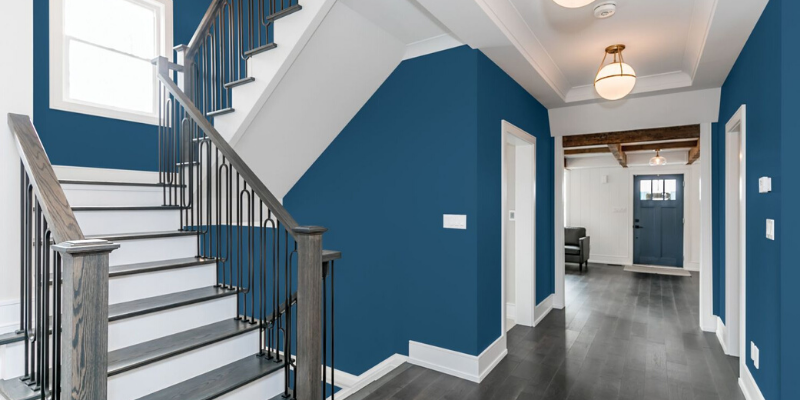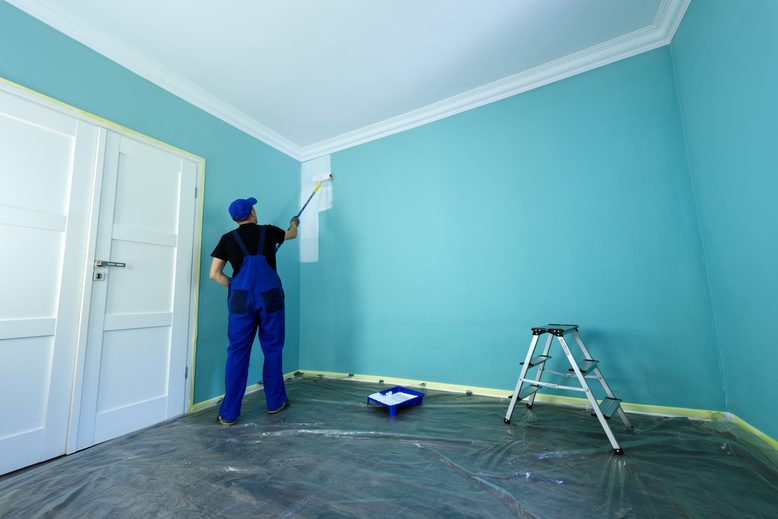Expert Lakewood Interior Painting for Residential and Commercial Properties
Expert Lakewood Interior Painting for Residential and Commercial Properties
Blog Article
Enhance Your Interior Style With Comprehensive Color Appointment
The integration of shade appointment into interior decoration offers an one-of-a-kind possibility to refine and raise the psychological and visual vibration of a room. By involving with a seasoned color specialist, you can navigate the complexities of shade option, ensuring that your choices not only complement building attributes yet additionally resonate with personal design and mental influence. This strategic partnership can significantly affect the total environment of your environment, promoting a feeling of consistency and purpose. Recognizing the nuances of this procedure is crucial-- what essential elements should be considered to accomplish ideal results?
Advantages of Color Assessment

In addition, color consultation aids in making the most of natural light and maximizing spatial understanding. Lighter shades can make a space appear more extensive, while darker tones create an intimate setting. Cleveland Metro Painting Specialists. This strategic application of shade can dramatically influence the general setting of any interior room
In addition, professional experts have a comprehensive understanding of ageless classics and present patterns, ensuring that the chosen shades will certainly remain appealing in time. This foresight can save clients from pricey redesigns in the future. Color examination encourages customers by supplying them with a clear vision and direction, cultivating self-confidence in their style choices and inevitably leading to a much more rewarding and successful indoor design result.
Comprehending Color Psychology
The value of color psychology in interior decoration can not be overemphasized, as it explores the mental and psychological impacts that various tones can stimulate in individuals. Shades can affect mood, actions, and also efficiency, making them an important consideration in any type of design job.
As an example, cozy colors such as red, orange, and yellow are usually related to power and warmth. They can promote feelings of enjoyment and convenience, making them suitable for social areas like living kitchens or spaces. Alternatively, awesome shades like blue, green, and purple have a tendency to evoke peace and tranquility, making them optimal for rooms or reflection areas.
Furthermore, the use of neutral tones can develop a well balanced environment by allowing the bolder colors to stand out without overwhelming the senses. Comprehending these mental effects makes it possible for developers to create areas that not only look visually pleasing however likewise promote psychological well-being.
Including shade psychology right into interior decoration entails a thoughtful selection of hues customized to the intended function of each area, ultimately boosting the overall experience for its residents. This understanding is important for accomplishing a practical and unified interior environment.
The Color Wheel Discussed
Comprehending the connections in between hues is necessary for reliable interior decoration, and the shade wheel works as a valuable device in this procedure. The color wheel, developed by Isaac Newton in the 17th century, highlights the range of colors arranged in a round style. It makes up primaries-- red, blue, and yellow-- that can not be developed by mixing various other shades. Additional colors, developed by combining primary shades, include green, orange, and purple. Tertiary shades result from blending a primary and a second color, resulting in tones such as red-orange and blue.
The shade wheel aids designers realize the connections between colors, including my latest blog post corresponding, analogous, and triadic plans. Corresponding colors, located opposite each various other on the wheel, develop dynamic contrasts that can invigorate a space. Similar colors, located alongside one another, offer a unified and natural look. Triadic plans make use of 3 evenly spaced shades, using equilibrium and visual rate of interest.
Using the color wheel in indoor style not just enhances aesthetic appeal but also evokes details emotions and atmospheres, making it an important referral for shade appointment. Understanding these partnerships inevitably encourages developers to develop rooms that are both functional and visually fascinating.
Choosing the Right Palette
An appropriate shade scheme can link an area, enhance its attributes, and evoke wanted emotions. Various areas serve diverse functions and call for combinations that reflect their intended use; for instance, serene shades such as soft blues or greens work well in rooms, advertising relaxation.
Light can substantially alter exactly how colors show up, so it is essential to analyze the area at different times of the day. A harmonious combination must complement these functions, developing a natural appearance throughout the space.
When selecting colors, utilize the 60-30-10 rule, which suggests that 60% of the space ought to be a leading shade, 30% a second best site shade, and 10% an accent color. This ratio guarantees balance and visual rate of interest (Cleveland Metro Painting Specialists). Sample colors on the wall surfaces before dedicating, as this enables you to see just how the shades communicate with one another and the total ambiance they create in your indoor layout project.
Dealing With a Color Specialist

When functioning with a shade professional, the procedure usually begins with a preliminary appointment. Throughout this meeting, you'll discuss your vision, preferences, and the existing elements in your room. The expert will certainly evaluate your needs and may suggest details color schemes that align with your objectives.
After establishing a direction, the consultant will supply examples and aesthetic help to assist you visualize the suggested color pattern. This step is crucial, as shades can appear in different ways under differing lights problems.
Furthermore, a color expert can lead you in selecting corresponding furnishings, art work, and accessories to integrate with your picked combination. By collaborating very closely, you can accomplish a refined visual that boosts your interiors and creates a welcoming atmosphere. Inevitably, the knowledge of a shade consultant can dramatically enhance the total effect of your design task.
Verdict
In recap, comprehensive color examination offers as a vital tool for improving indoor layout. By leveraging specialist knowledge of color psychology and spatial dynamics, a tailored color palette can be established to evoke particular emotions and produce an unified atmosphere.
By involving with a skilled shade professional, you can browse the intricacies of shade option, guaranteeing that your options not only complement architectural functions Your Domain Name however likewise reverberate with personal style and emotional influence. It comprises main shades-- red, blue, and yellow-- that can not be developed by blending other colors.The shade wheel assists developers realize the partnerships between colors, including corresponding, comparable, and triadic plans.When choosing shades, make use of the 60-30-10 guideline, which suggests that 60% of the room must be a dominant shade, 30% a second color, and 10% an accent shade. By leveraging specialist understanding of shade psychology and spatial characteristics, a customized shade combination can be developed to stimulate particular feelings and create a harmonious atmosphere.
Report this page